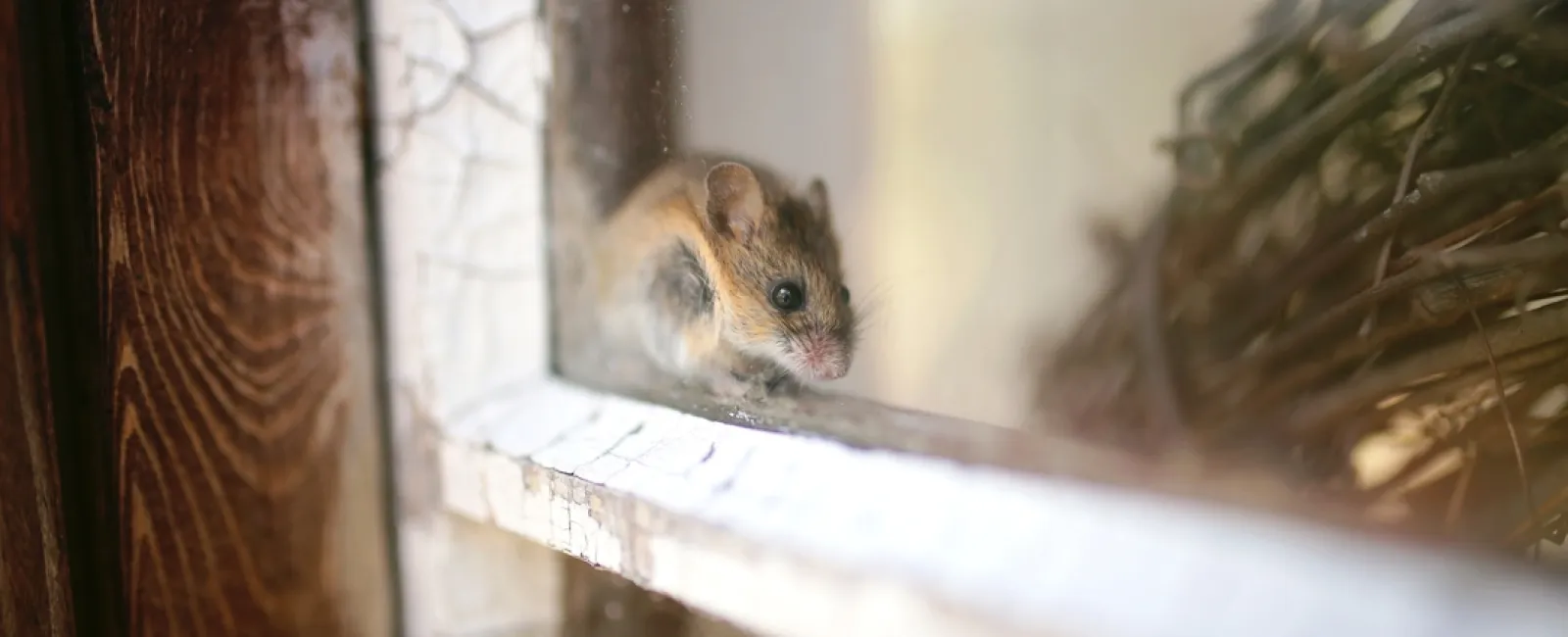During spring and summer, pests seem to be buzzing, crawling, and flying around in full force, in a hurry to eat and reproduce during the warmer months. However, fall and winter are not without their own unique pest issues. As temperatures begin to drop, many pests will start searching for food and shelter inside human homes.
As we head toward the coldest months of the year, keep a lookout for the following wintertime invaders in your home.
1. Mice
Mice have an uncanny ability to squeeze through holes and cracks. The secret lies in their tiny, extremely flexible skeletons. In fact, mice can squeeze through openings no bigger than a dime! When rodent-proofing your property, it's essential that you equip all exterior doors with a sweep and fill gaps around your home with foam sealant or caulk and steel wool.
Signs of a mouse infestation include:
- Mouse droppings, especially in your attic, around your pantry items, or under the sink
- A stale, ammonia-like smell coming from your attic or air ducts
- Signs of gnawing on food packages, furniture, or electrical wires
- Holes chewed into walls to make entry points
- Scratching or scurrying sounds inside walls or cabinets
- Shredded fabric, paper, or plant materials used for nesting
2. Cockroaches
Cockroaches can enter your home through cracks and holes, but it's also possible for them to hitch a ride inside delivery packages, groceries, and more. Typically, roaches are attracted to moisture (the thing they need most to survive) and food. While roaches prefer sweets, starches, and meat, they'll eat just about any sustainable food source to stay alive.
Signs of a cockroach infestation include:
- Visible cockroaches—where there's one, there are always more
- Dark streaks on your floors and walls
- Egg capsules (they look similar to brown beans)
- A musty smell left behind by cockroach waste
- Discarded cockroach skins
3. Stink Bugs
Whatever you do, don't squish these bugs. Stink bugs are an invasive species introduced to the U.S. from Eastern Asia. Whenever these insects are startled or crushed, they release a horribly pungent smell as a defense mechanism. For the occasional stink bug invader, you can exterminate it by spraying it with a mixture of dish soap and water.
Signs of a stink bug infestation include:
- Stink bugs gathering in the sunny areas of your home
- An unpleasantly pungent, woody, burnt-rubber odor
4. Silverfish
As their name implies, silverfish look like little, silver, land-bound carp with legs. They have six legs total, plus two antennae and three, antennae-like appendages sticking out in back. Silverfish prefer the dampest, most humid areas in homes, so you'll typically find them in the bathroom or basement. However, they can cause damage in other areas of a home and are known for chewing holes in clothing, upholstery, and paper.
Signs of a silverfish infestation include:
- Irregular holes or feeding marks
- Paper and fabric with yellow stains and silverfish feces (which look like the black pepper from a shaker)
5. Rats
Like mice, rats can fit through extremely small spaces to get inside a home. They only need a hole as large as a quarter to squeeze through. Rats can also be very clever, using woodpiles, nearby trees, open windows, vents, and gaps in the roof to gain access to the indoors. Once inside, rats will often choose to travel behind your walls and through your ductwork to remain unseen.
Signs of a rat infestation include:
- Rat droppings, especially in your attic or around your pantry items
- A stale, ammonia-like smell coming from your attic or air ducts
- Signs of gnawing on food packages, furniture, or electrical wires
- Holes chewed into walls to make entry points
- Scratching or scurrying sounds inside walls or cabinets
- Shredded fabric, paper, or plant materials used for nesting
6. Spiders
You'll typically find spiders where there's a food source available. With fewer bugs around outdoors during winter, you may find more spiders looking for prey inside your home. Fortunately, most spiders in the U.S. are not venomous to humans, but be cautious when reaching into dark, undisturbed corners of your home (where spiders are most likely to hide and build webs).
Signs of a spider infestation include:
- Lots of webs
- Egg sacs (small, round bundles made of spider silk)
- A large number of visible spiders
At Greenix Pest Control, it's important to us that your home feels like your safe haven. No matter what time of year you're facing a pest control issue, you can count on our experts to help you solve it and put that stress behind you. Schedule a service or talk with our team today!

